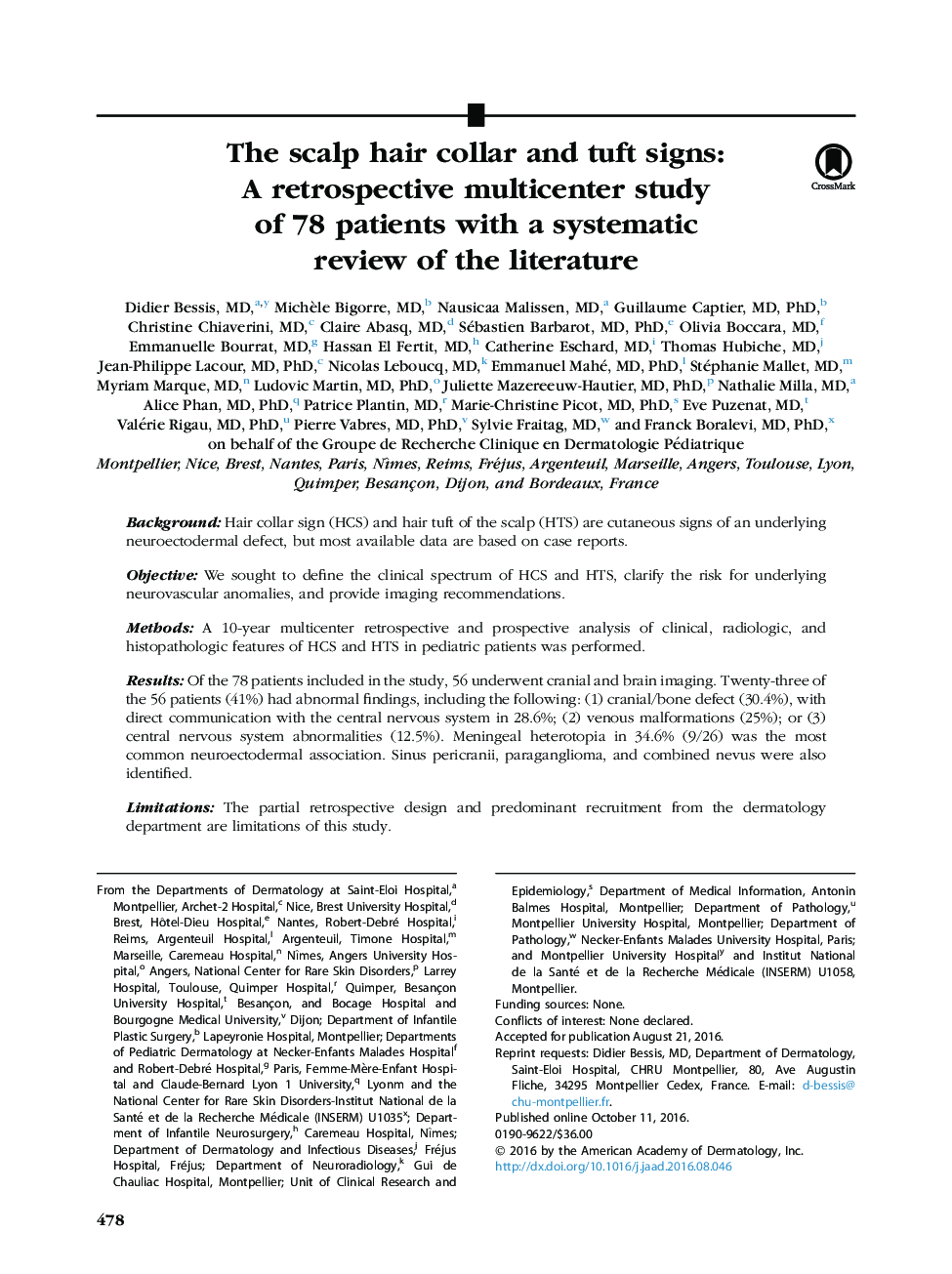| کد مقاله | کد نشریه | سال انتشار | مقاله انگلیسی | نسخه تمام متن |
|---|---|---|---|---|
| 5648329 | 1587497 | 2017 | 10 صفحه PDF | دانلود رایگان |
BackgroundHair collar sign (HCS) and hair tuft of the scalp (HTS) are cutaneous signs of an underlying neuroectodermal defect, but most available data are based on case reports.ObjectiveWe sought to define the clinical spectrum of HCS and HTS, clarify the risk for underlying neurovascular anomalies, and provide imaging recommendations.MethodsA 10-year multicenter retrospective and prospective analysis of clinical, radiologic, and histopathologic features of HCS and HTS in pediatric patients was performed.ResultsOf the 78 patients included in the study, 56 underwent cranial and brain imaging. Twenty-three of the 56 patients (41%) had abnormal findings, including the following: (1) cranial/bone defect (30.4%), with direct communication with the central nervous system in 28.6%; (2) venous malformations (25%); or (3) central nervous system abnormalities (12.5%). Meningeal heterotopia in 34.6% (9/26) was the most common neuroectodermal association. Sinus pericranii, paraganglioma, and combined nevus were also identified.LimitationsThe partial retrospective design and predominant recruitment from the dermatology department are limitations of this study.ConclusionsInfants with HCS or HTS are at high risk for underlying neurovascular anomalies. Magnetic resonance imaging scans should be performed in order to refer the infant to the appropriate specialist for management.
Journal: Journal of the American Academy of Dermatology - Volume 76, Issue 3, March 2017, Pages 478-487
